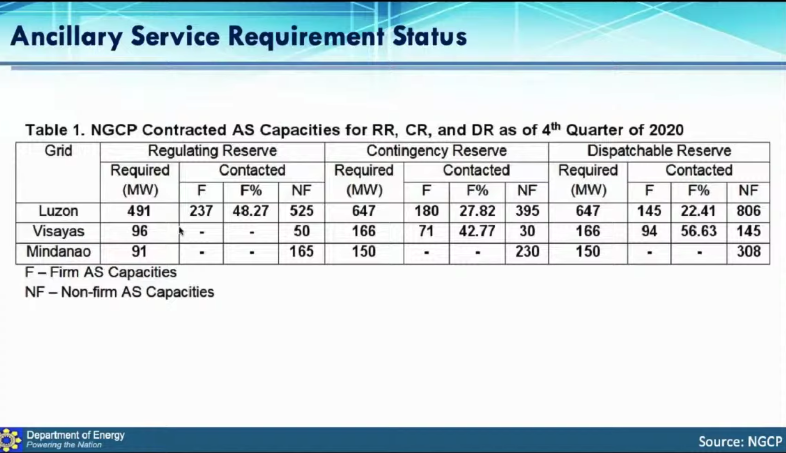SUMMARY
This is AI generated summarization, which may have errors. For context, always refer to the full article.

Several areas in Metro Manila and other parts of Luzon experienced rotational blackouts on consecutive days again, for the first time since coronavirus lockdowns slashed power demand.
Power outages during the “summer” months or the dry season, however, are not new, and these have often been attributed to forced plant outages.
Why do rotational blackouts happen?
Rotational blackouts, also called manual load dropping, happen when the demand for electricity peaks and power supply thins or becomes insufficient.
This means that distribution utilities have to cut off the electricity of non-critical sectors – such as households – to ensure the reliability of the grid.
Rotational blackouts are expected when red alert is raised over a grid.
What are the alerts?
The National Grid Corporation of the Philippines (NGCP), as the system operator, issues alerts that determine the status of a grid. These alerts are:
- White – sufficient supply
- Yellow – low supply as demand approaches critical levels
- Red – supply is insufficient
Yellow and red alerts are raised when reserves have to be tapped to meet electricity demand.
Yellow alert is raised when reserves fall below the capacity of the biggest power plant in the grid. For the Luzon grid, the contingency reserve is targeted at 647 megawatts (MW) – equivalent to the capacity of the Sual coal-fired plant.
Red alert, meanwhile, is raised when the contingency reserve is depleted, which means that the regulating reserve has to be tapped. The alert may also be declared when there is a power generation deficiency.
According to officials, the regulating reserve should be at least 400 MW to ensure the reliability of the grid. This is why rotational blackouts are implemented to clip electricity demand.
Do blackouts mean insufficient power supply?
Not necessarily.
The Luzon grid has a dependable capacity of around 15,000 MW, which is supposed to be more than sufficient to cover the island region’s projected peak power demand of 11,841 MW in 2021.
But plant outages happen.
Normally, plants have preventive maintenance scheduled throughout the year. However, unplanned outages can also occur.
As of December 2020, there are 192 plants connected to the Luzon grid, two-thirds of which are 15 years old or older. Power distributor Manila Electric Company said in an explainer that “the older the plant is, the higher the tendency for occasional malfunctions that lead to shutdowns that are unscheduled.”
As of Wednesday, June 2, forced plant downtime has resulted in 1,314 MW of lost capacity, in addition to the derating of power plants – or the lowering of their rated capability – which led to a reduction of supply by 2,225 MW. The total unavailable capacity is at 4,187 MW.
Haven’t we had this power problem for so long?
Yes, especially when the demand for electricity spikes during the dry season.
The Department of Energy (DOE) has said that demand is also dependent on the heat index, since a 1°C increase in temperature could lead to a 100-MW increase in power demand.
Aside from blackouts, plant outages also result in higher spot prices due to lower supply amid high demand.
So what has the government been doing?
In 2019, the DOE issued Department Circular No. 2019-12-0018, which mandates system operator NGCP to contract power reserves, called ancillary services (AS).
The DOE sees firming up AS as a remedy to the recurring problem. The energy department had blamed the NGCP for supposedly dragging its feet by pursuing “unreliable” non-firm contracts.
The NGCP, however, had argued that AS can only be procured when there is sufficient power supply. “If there is no supply, there is no reserve, no ancillary services to be procured,” NGCP Assistant Corporate Secretary Ronald Dylan Concepcion said last April.

Still, the DOE plans to launch the initial phase of AS trading in the spot market by the end of 2021, which would allow the NGCP to purchase reserves at competitive prices. The full implementation is due in 2026.
The DOE also imposed a moratorium on new coal plants in 2020 to push for renewable energy investments. By 2040, the Philippine government targets to have additional 20,000-MW RE capacity.
What can consumers do?
While a lasting solution has yet to be achieved, the DOE reminded consumers to use energy wisely as a “way of life.”
Tips from the energy department include reducing air-conditioning and television usage, turning lights off when not in use, and avoiding the unnecessary opening of refrigerator doors.
The DOE has also said it will be stricter in enforcing compliance with Republic Act No. 11285 or the Energy Efficiency and Conservation Act, for energy-intensive industries. – Rappler.com
Add a comment
How does this make you feel?
There are no comments yet. Add your comment to start the conversation.